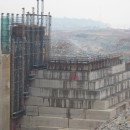Languages
Friday, April 19, 2024
News and Views from the Global South
THE THREATS OF THE BOOM-BUST CYCLE
As in previous episodes, a key factor in the current boom in capital flows to developing and emerging economies (DEEs) is a sharp cut in interest rates and a rapid expansion of liquidity in the major advanced economies (AEs), notably the US. This first occurred in a coordinated way after an agreement at the April 2009 G20 summit in London as a countercyclical response to the crisis. In the US, recovery started in summer 2009 but the strong growth of nearly 4 percent in the first quarter of 2010 slowed to less than 2 percent in the second quarter. The response of the US Federal Reserve was to initiate another round of quantitative easing through purchases of long-term treasuries and other securities. Although the declared objective was to stimulate private spending by lowering long-term interest rates and raising asset values, this move has also been widely seen as an effort to weaken the dollar and stimulate exports.IMF PRIORITIES AND POLICIES NEED URGENT REFORM
Much of the recent public discussion on the International Monetary Fund has been about the successor to Dominique Straus-Kahn and the flawed system of choosing its chief.THE BOOM IN CAPITAL FLOWS TO DEVELOPING COUNTRIES CAN TURN INTO A CAPITAL PUNISHMENT
An unusual feature of the global financial crisis is that for developing countries (DCs) the financial band seems to have picked up the pace of the music. While many advanced economies (AEs) continue to encounter debt deflation, financial stringency and risks of insolvency, the financial problem for most DCs is asset inflation, credit expansion and currency appreciations. Except for a brief interruption in 2008, DCs have continued to receive large capital inflows as major AEs have responded to the crisis caused by excessive liquidity and debt by creating still larger amounts of liquidity to bail out troubled banks and governments, lift asset prices and lower interest rates. Quantitative easing and close-to-zero interest rates are now generating a surge in speculative capital flows to DCs with higher interest rates and better growth prospects, creating bubbles in foreign exchange, asset, credit and commodity markets.WHERE IS THE GLOBAL ECONOMY HEADED?
After a deep and widespread contraction in economic activity and a significant drop in output and employment, policy makers, financial analysts, and media pundits all appear to be heartened by the news from different parts of the world that the worst is over. The main concern now is about the strength and the shape of the recovery.« Previous Page












